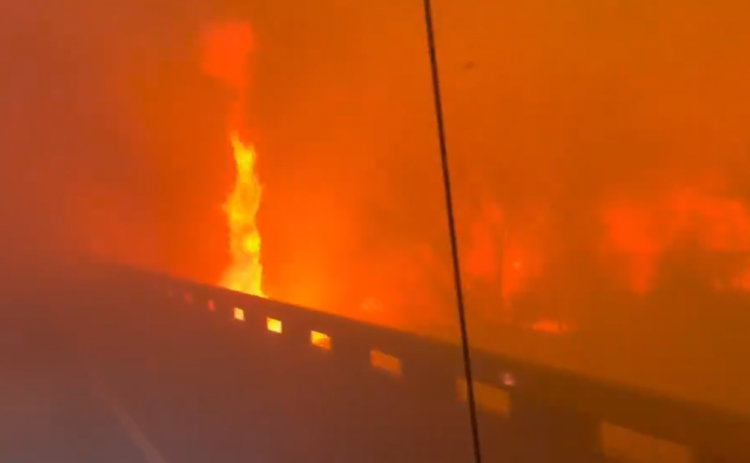The Texas Panhandle is currently grappling with a catastrophic wildfire, the Smokehouse Creek Fire, which has rapidly escalated to become the largest in the state's history. As of Thursday, the fire has consumed an astonishing one million acres, surpassing the size of Rhode Island, with only 3% containment. This inferno, coupled with the 687 Reamer Fire, which has devoured an additional 2,000 acres, marks a dire situation for the region.
The Texas A&M Forest Service is battling a total of 130 active fires across the state, with the Windy Deuce and Grape Vine Creek Fires also contributing significantly to the crisis. The Windy Deuce Fire alone has ravaged through 142,000 acres and is 30% contained. In light of these devastating events, Texas Governor Greg Abbott has escalated the state's emergency management readiness and issued a disaster declaration for 60 counties, signifying the severity of the situation.
The tragic toll of these fires includes the loss of at least one life, 83-year-old Joyce Blankenship from Stinnett, whose demise was confirmed by her grandson, Nathan Blankenship, to CNN. He lamented, "The house was gone. There was no way she could've gotten out." The fires have also necessitated widespread evacuations and led to the brief closure of the Pantex nuclear plant, highlighting the widespread impact of the disaster.
Contributing to the rapid spread of the fire are record high temperatures and strong winds, with gusts reaching up to 60 miles per hour. These conditions, coupled with the dry environment, have created a perfect storm for the wildfire's expansion. The National Weather Service has warned of the continuing risk, citing the unprecedented warm temperatures and potential for further wind-driven fires.
The situation is exacerbated by Texas' unique vulnerability to wildfires, particularly in its winter fire season, which runs from February through April. This period, characterized by high winds and dry vegetation, is notorious for significant fire outbreaks, a pattern that is being witnessed with the current blazes. Climate projections suggest an increasing trend in wildfire risks due to drying soils and more abundant fuel loads, a consequence of fluctuating weather patterns that include intense rains followed by prolonged droughts.
In response to the crisis, President Biden has been briefed, and federal support is being coordinated, with the White House press secretary Karine Jean-Pierre acknowledging the efforts of firefighters and first responders. The Federal Emergency Management Agency and the U.S. Forest Service are actively assisting in the firefighting efforts, reflecting the national concern over the disaster.
As the state braces for potentially deteriorating conditions, with forecasts predicting a return of high winds and rising temperatures over the weekend, the fight against these historic wildfires continues. The brief respite expected from cooler temperatures and possible precipitation may offer some relief to firefighters, allowing them to make progress in containment efforts. However, the looming threat of adverse weather conditions serves as a reminder of the ongoing battle against the elements that Texas faces in its effort to control the unprecedented Smokehouse Creek Fire and its accompanying blazes.






